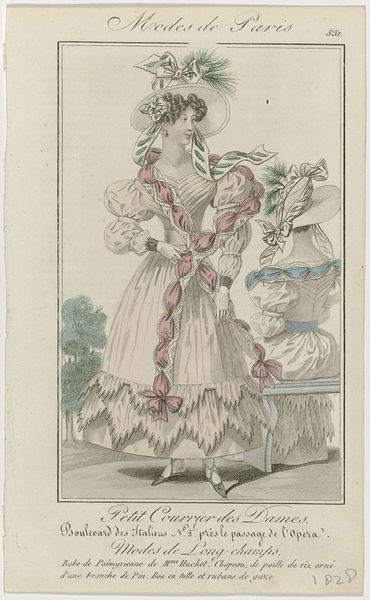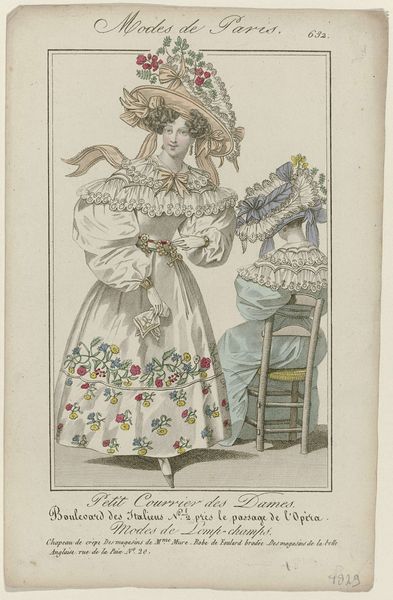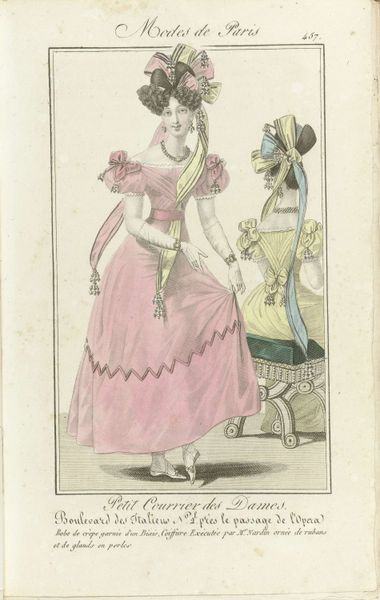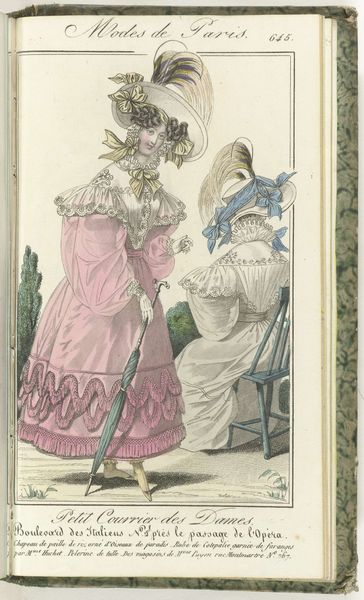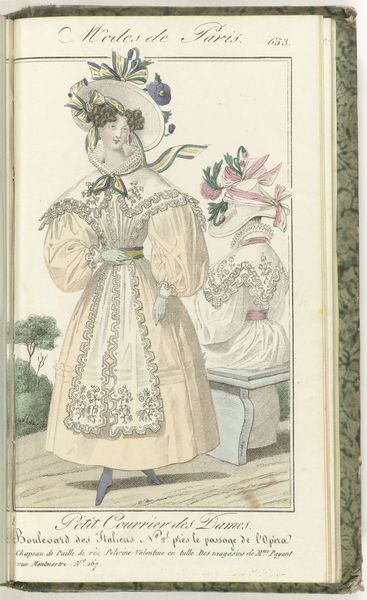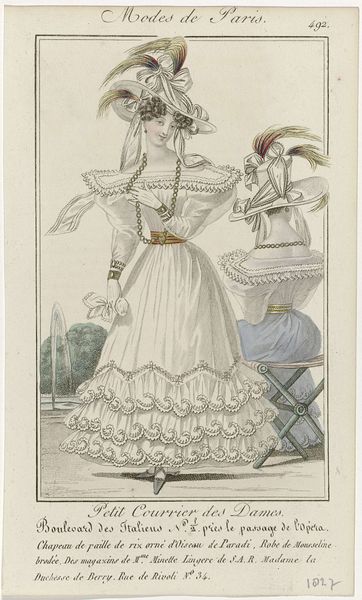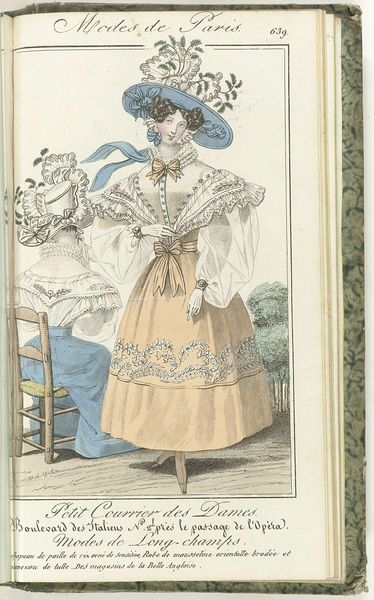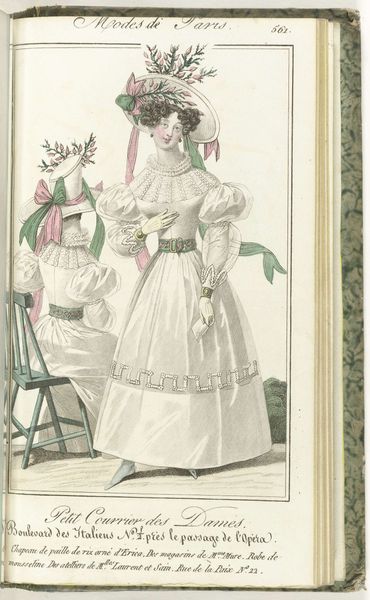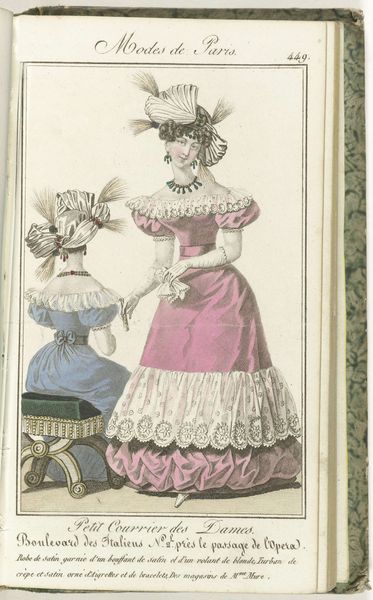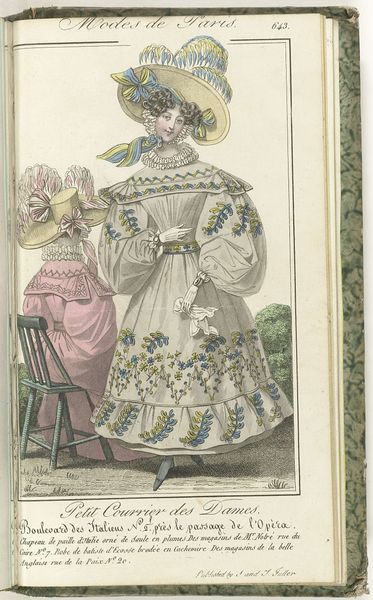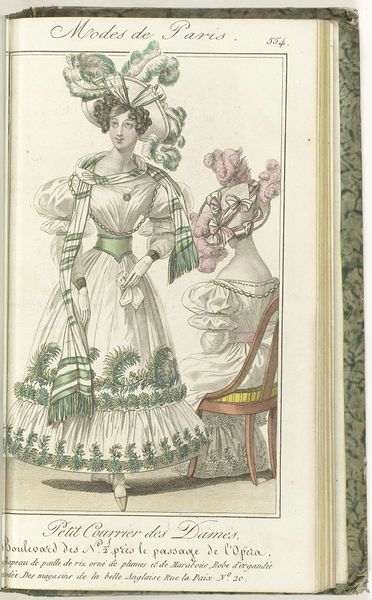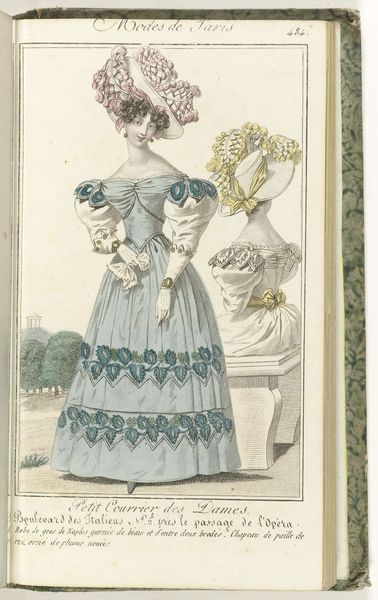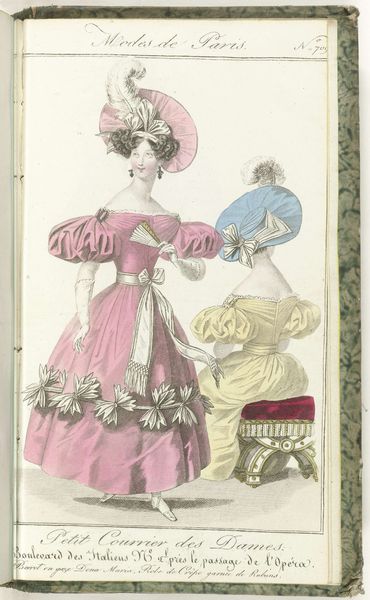
Petit Courrier des Dames, 10 juin 1827, No. 476 : Chapeau de paille de riz... 1827
0:00
0:00
anonymous
Rijksmuseum
painting, watercolor
#
portrait
#
painting
#
pen illustration
#
figuration
#
watercolor
#
romanticism
#
sketchbook drawing
#
watercolour illustration
#
genre-painting
#
dress
Dimensions: height 201 mm, width 113 mm
Copyright: Rijks Museum: Open Domain
Editor: Here we have a page from 'Petit Courrier des Dames' dated June 10th, 1827. It’s a watercolor illustration depicting women’s fashion of the time. The details on the dress seem so intricate. What strikes you most about this piece? Curator: The materiality jumps out at me. It's more than just a representation of fashion; it's a document of textile production, labor, and consumption in 1827. Look closely – the description mentions “Chapeau de paille de riz orné d’aigrettes, Robe de Cotopali garnie de Biais et de Broderies en Soie" – straw hats, cotton dresses, silk embroideries... Editor: So, you are saying the description of these dresses reveals how many different workers were part of the production line. Curator: Precisely. Each material implies a different form of labor. Rice straw signifies agricultural workers, cotton implies plantation economies and potential slavery, silk embroideries showcase specialized artisan work. We need to question how these things were produced, by whom, and at what cost. It prompts us to consider the social and economic relations embedded within these clothes. Were the bias tapes and embroidery done in a workshop, a manufactory, or in the home? Who was making these fashionable garments? Editor: It's incredible to think of fashion as a reflection of so much more. It is indeed a whole network. It’s no longer just a pretty drawing. I will keep a more materialist point of view going forward, seeing the connections of a textile. Curator: Exactly. The image serves as a launchpad for examining a range of interconnected historical and cultural forces at play.
Comments
No comments
Be the first to comment and join the conversation on the ultimate creative platform.
